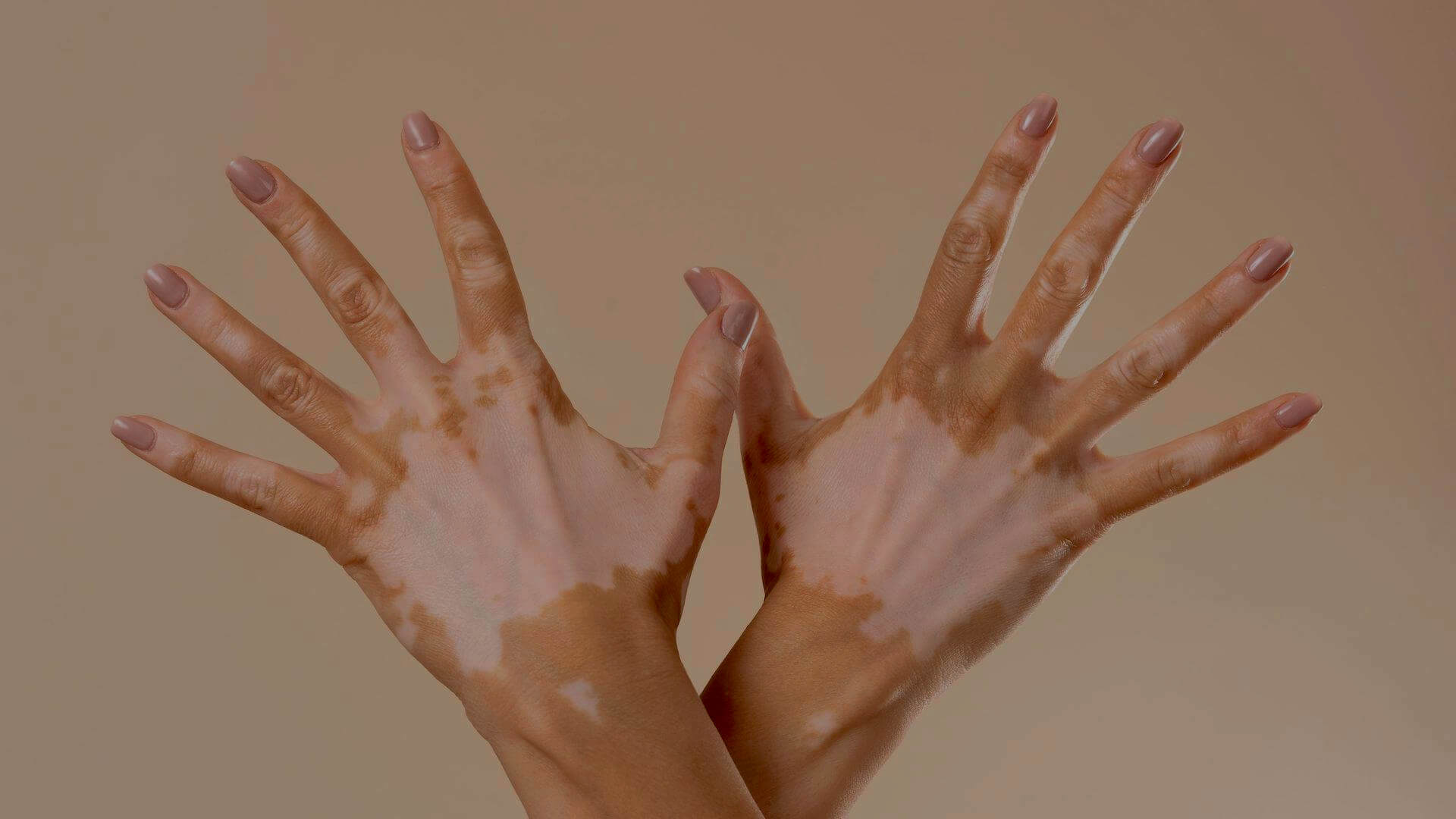How does vitiligo manifest itself?
Vitiligo is an acquired loss of skin pigment due to the death of pigment cells - melanocytes, producing the skin pigment - melanin. This creates circumscribed white-coloured deposits anywhere on the body with a smooth surface of various shapes and sizes. They are not infectious or contagious.
The edges of the deposits tend to be more pigmented than the surrounding skin. The most common areas are the fingers and toes, ankles, elbows, knees, hip area, back, but also around the eyes, mouth, hair and hairs, which grow white in the affected areas.
What are the risk factors for vitiligo?
It occurs in 1-2 of the % population, mostly occurring between 10 and 30 years of age. Family history of vitiligo is a risk factor, but it cannot be determined exactly how likely it is to occur in children or if it occurs at all. Another is the presence of autoimmune diseases in the patient and in the patient's family.
The most common include:
- Thyroid disorders (almost in 30% vitiligo patients): Hashimoto's thyroiditis, Graves-Basedow goiter
- Diabetes mellitus (diabetes)
- Pernicious anemia (anemia)
- Systemic connective tissue diseases: rheumatoid arthritis, systemic lupus erythematosus
- Crohn's disease, Addison's disease, Myasthenia gravis etc.
The disease is caused by the interplay of several factors, which largely include genetic predisposition, survival of stressful situations, reactions to infections, and the state of the immune system. Any injury to the skin can trigger a cascade of processes that lead to depigmentation of the skin, which is called the Koebner phenomenon.
What are the treatment options for vitiligo?
The prerequisite is a complete examination of the patient with a focus on possible concomitant autoimmune diseases. Treatment of vitiligo is time-consuming, long-term and not always successful. Even at present it is not satisfactory with achieving complete remission of the disease in all patients.
In terms of aesthetics, vitiligo affects the patient's psyche and puts a strain on his personal and professional life. It is necessary to protect the lesions from sunlight and to use SPF 50+ sunscreens, because vitiligo lesions are hypersensitive to UV radiation due to a deficiency of the protective pigment melanin. Sunburn easily occurs. Treatment therefore focuses on repigmentation of the lesions. The mainstay is the topical application of ointments containing corticosteroids (drugs that inhibit the immunological processes responsible for the depigmentation of the plaques).
Phototherapy - treatment with specific ultraviolet rays (UVB 311 nm)
Phototherapy takes place under the supervision of a doctor in a cycle of 20-25 sessions, 2-3 times a week. A modification of phototherapy is the PUVA method, in which photosensitizers - psoralens - are used together with UVA radiation. These are administered systemically in the form of drugs or topically on the skin in the form of solutions or baths.
In the case of extensive universal involvement, irreversible depigmentation of residual, normally pigmented deposits is carried out abroad using chemical agents, which is a serious intervention in the body with lifelong consequences, in which effective and daily protection from sunlight is necessary due to the removal of the skin's natural barrier.
Vitiligo treatment in Dermarevolt - a step forward in regenerative medicine
The Regenera Activa method is a new and revolutionary treatment with our own progenitor cells. These cells can induce repigmentation in lesions stable for at least 2 years. The physician obtains the progenitor cells from the patient in a patented, purely mechanical procedure, without the addition of chemicals. This increases the likelihood of acceptance by the body, while minimizing the possibility of adverse reactions.
What is the uniqueness of the Regenera Activa method?
It is based on the fact that the hair follicle is an important "reservoir" of melanocytes (cells that produce the pigment melanin). The harvested progenitor cells are then able to regenerate the target cells in the area to which they are injected and repigmentation occurs.
Is the procedure painful?
The procedure is minimally invasive, the size of the skin grafts is approximately 3.5 mm. The harvesting in the area behind the ear is performed under local anaesthesia, so it is painless. The tissue is then placed in a machine with a special filtration system that can separate the cells without the addition of any chemicals, preserving the high vitality of the cells. This produces a suspension of progenitor cells, which is then injected directly into the areas affected by vitiligo. The procedure is a one-time treatment, and we can target an area approximately the size of the palm of your hand in a single treatment. Approximately 3 weeks after the treatment, the patient undergoes the required number of phototherapy sessions.
Can vitiligo be influenced by prevention?
There is no special prevention of the development of vitiligo. In general, a healthy lifestyle is recommended - plenty of exercise and a balanced diet. Taking nutritional supplements and vitamins, antioxidants - especially vitamin A, C, E, beta-carotene, minerals and trace elements - is also beneficial.


